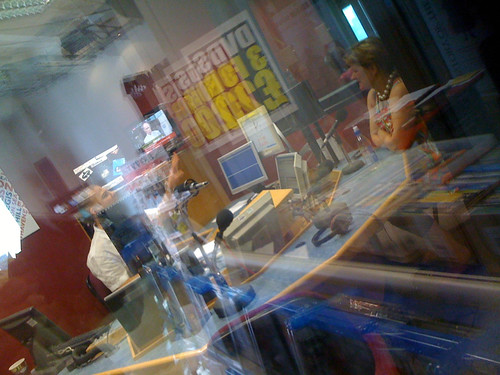Brighton Pavilion
Originally uploaded by This Window
The Prince of Wales, who later became King George IV, first visited Brighton in 1783. The seaside town had become fashionable through the residence of George’s uncle, the Duke of Cumberland, whose tastes for lavish cuisine, gaming and the theater the young prince shared. Enough of the history lesson – I thought the borders in the little park were inspiring. These flower beds were completely randomly planted and contained a mixture of wild and cultivated plants. The pastel colors were subtle but incredibly vibrant – maybe I will have a go at recreating it on a smaller scale?
The interior of the Pavilion is extremely over the top, verging on bad taste, with reds, gold and greens on the walls splashed with intertwining snakes and dragons – reminded me of a very bad 1970’s swirly carpet (puke). The lavish dinning room with its cut glass and silver encrusted, huge dinning table had a suspended chandelier above it which had an enormous dragon as a ceiling boss, having a combined weight of about 1 ton.
The kitchen was again on the grand scale. This had been converted during the First World War into an operating theatre where injured Indian troops were care for and had been a place where dozens of front line troops had there limbs amputated. (Worth seeing the little exhibition space dedicated to the Asian Colonial troops upstairs in the Pavilion.)
The reason we were in Brighton
“I can’t believe I am 46 and I’ve never been to Brighton before. How did I miss this iconic rite of passage? Nary a bank holiday awayday or a dirty weekend in all my days. Well, I’m making up for it now – and in the best possible style – as writer in residence at the Hotel du Vin in Ship Street. It’s an awesome Gothic revival meets mock Tudor building done out with the usual Hdv flair and panache, a stunning two-floor bar and a buzzy bistro – and adjoining it is the unique Pub du Vin, encompassing tradition with a twist (pork scratchings and pickled onions available at the bar). I loved the pewter bar and the trompe l’oieul: peeling wallpaper shwoing exposed brick.“
Extract from the Chablis Diaries

